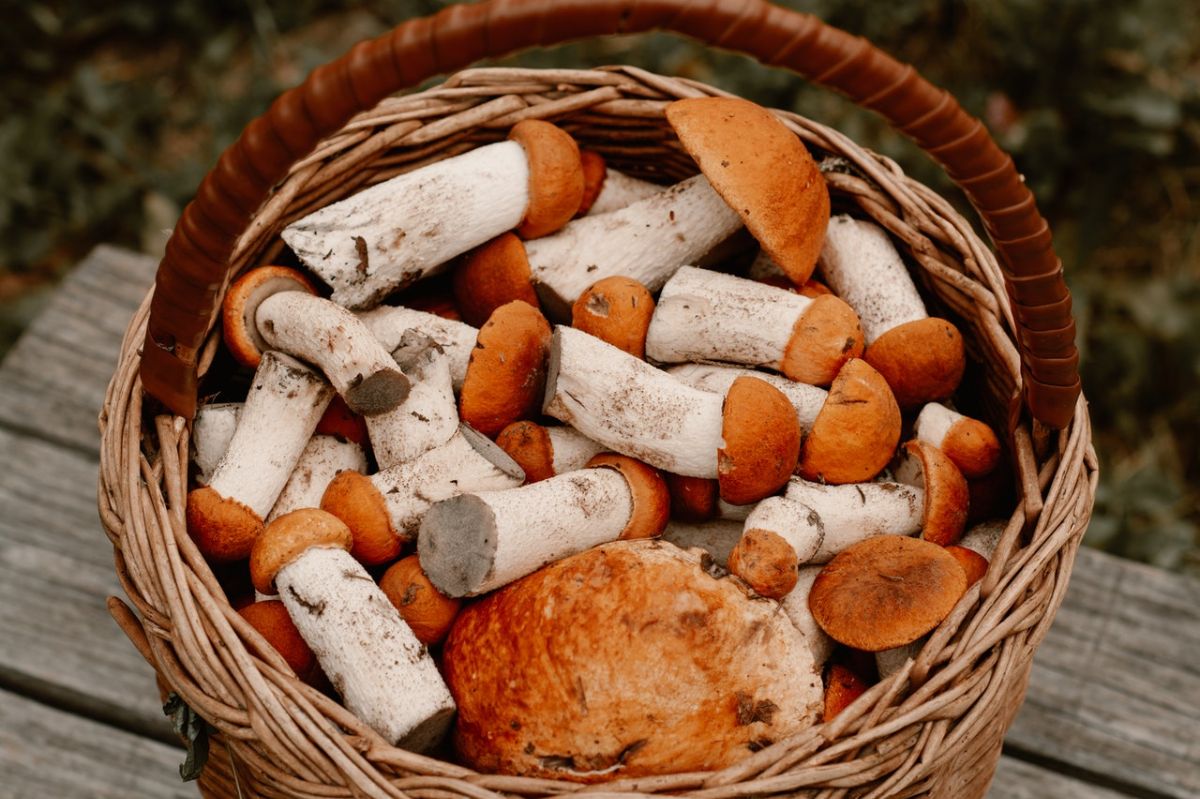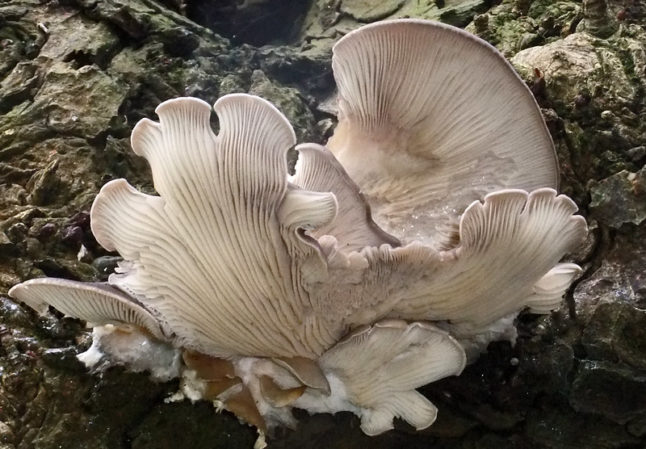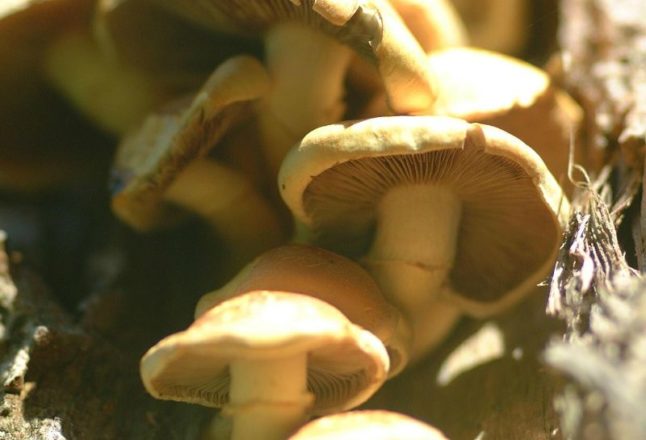
If you’ve been eyeing the mushrooms at the grocery store and searching for a more fun and frugal option than buying them, good news – many edible mushrooms are easily grown at home. Our guide provides a full primer on how to grow mushrooms in your yard.
In this article, we’ll cover:
- Benefits of Growing Mushrooms in Your Yard
- Types of Mushrooms to Grow
- Where to Grow Mushrooms in Your Yard
- Steps to Grow Mushrooms in Your Yard
- FAQ About Growing Mushrooms in Your Yard
Benefits of Growing Mushrooms in Your Yard
Whether you’re homesteading or just looking for a unique garden pastime, there are plenty of benefits to growing your own mushrooms in your yard.
- Homegrown mushrooms are more affordable long term than constantly running to the grocery store for a fungi fix, particularly for gourmet mushrooms like shiitake, oyster mushrooms, and lion’s mane.
- Mushrooms can grow in your yard where nothing else will. Mushrooms prefer dark, damp conditions, so a mushroom kit can work in a particularly shady spot or underneath a deck.
Growing mushrooms outside also often requires less hands-on care to maintain growing conditions than setting up your kit inside.

Types of Mushrooms to Grow
Many species of mushroom are easily grown outdoors.
Wine-cap mushrooms take well to wood chip kits and don’t have any toxic lookalikes, making them easy to identify in case your kit is contaminated with other species.
Oyster mushrooms, meanwhile, are aggressive enough that they’re likely to take over your mushroom bed without risk for contamination.
Other specialty varieties such as lion’s mane and shiitake mushrooms are also easy to grow at home.
Whatever you choose, for your first batch you may want to avoid cremini, portobello mushrooms, and white button mushrooms, as these are easily confused for poisonous Amanita varieties.
Where to Grow Mushrooms in Your Yard
It’s easy enough to find the perfect spot to grow mushrooms in your yard. Try particularly shady areas or the space underneath your deck or patio for the perfect mushroom garden.
When growing mushrooms outdoors, take into account that your grow kit won’t be sterile or easily controlled like an indoor setup. While potential exposure to other species means you should properly identify your mushrooms before eating, growing outdoors is a less labor-intensive process that allows nature to take its course.
Mushrooms from a log or kit can also be set up in indoor spaces, like a basement or garage, as long as conditions are kept dark and moist with proper air exchange.
For food safety, be sure to place your homegrown mushrooms under gentle running water or wipe them with a damp cloth when you’re ready to cook. Don’t wash or clean mushrooms until right before you eat or prepare them.
Steps to Grow Mushrooms in Your Yard
Choose Your Kit
Mushroom grow stations can easily be set up outdoors using mushroom kits or freshly-cut hardwood logs. Some even like to use coffee grounds, plastic bags, or toilet paper.
Different varieties of mushrooms prefer different logs. While oyster mushrooms thrive on tulip poplar, shiitake prefers oak and hard maple.
If you choose to grow your mushrooms on a log, you’ll also have to source one that’s freshly-cut – standard firewood logs may already have fungi of their own.
If you’re a beginner mushroom grower, a mushroom grow kit that grows from a substrate of wood chips, sawdust, or compost is the best option to get reliable results and an understanding of how mushrooms grow when cultivated at home. These can be purchased, but they’re also simple to DIY with a few common household items.
Gather Materials
To build a mushroom grow station at home, you’ll need:
- A wooden raised garden bed (plastic containers can also be used, but you’ll have to drill holes into the bottom for oxygen)
- Cardboard
- Wood chips or hardwood sawdust for a substrate growing medium, depending on species. Wine-cap mushrooms grow well on wood chips, while shiitake thrives on sawdust.
- Mushroom spawn (check out this comparison guide for information on which variety to buy)
- Straw. This is a great nutrient source for oyster mushrooms and wine-cap mushrooms, and it also provides a moisture and thermal barrier for other varieties.
Build Your Bed
- First, line the bed with cardboard to retain moisture and keep out weeds.
- On top of the cardboard, spread a growing medium layer of wood chips, sawdust, or straw.
- Top the nutrients with your first layer of mushroom spawn, then cover it with another layer of nutrients to surround the spawn with food.
- Continue alternating between growing medium and spawn layers to surround your spawn with nutrients.
- Once you’ve reached the top of your raised bed, cover the mushroom kit with a layer of straw. This will act like mulch to lock in moisture and act as a thermal layer in colder months.
Water Regularly
After you’ve built your mushroom grow station, it’s time to water it deeply to moisturize your mushroom spawn for the first few weeks of growing. One of the biggest reasons a mushroom crop could fail is not having enough moisture.
After the initial soak, keep an eye on your mushroom bed to make sure it doesn’t dry out. Water your bed deeply at least once a week to keep conditions nice and damp.

FAQ About Growing Mushrooms in Your Yard
After the initial setup, growing mushrooms in your yard is a relatively hands-off growing process that mostly involves maintaining moist conditions. You can re-use your mushroom bed each year as long as you inoculate it with a fresh layer of nutrients annually.
Though mushrooms will not grow in cold temperatures, selecting a mushroom log in the early fall can be a good way to take advantage of the nutrient-rich wood in trees that have gone dormant for the season. You can store your log indoors or outdoors in a protected, shady spot until you’re ready to grow.
If they’re planted in the cold, the mycelium will lie dormant in mushroom beds and start feeding from the nutrients when the weather warms up.
Or, you can simply set up your mushroom kit in early spring, right after the frost has started to thaw. That way, you’ll have a bountiful fungi harvest by the fall.
After setting up your mushroom kit, you should see mycelium and other signs of mushroom growth within the first weeks or months of cultivation, depending on the species you choose. From the initial setup, fully-grown fresh mushrooms will be ready to harvest after around six months.
Growing mushrooms indoors will take less time because the mushrooms will be growing in ideal conditions, but you’ll have to spend more time creating those conditions yourself with hands-on effort to regulate temperature, light, and air exchange.
How to Grow Mushrooms – and Get Rid of Mushrooms – in Your Yard
Building a mushroom kit to grow mushrooms in your yard is relatively straightforward, but if you want to get rid of any stray mushrooms in your yard – as opposed to growing mushrooms in a kit or log – well, we’ll show you How to Get Rid of Mushrooms Growing in Your Yard.
Main Photo Credit: Irina Iriser / Pexels